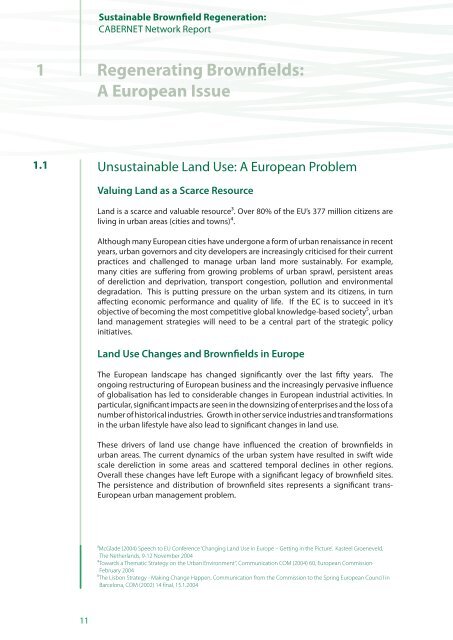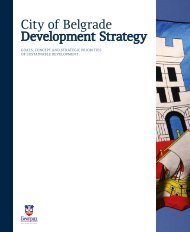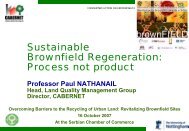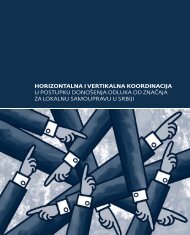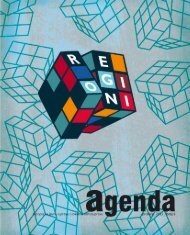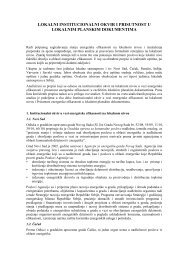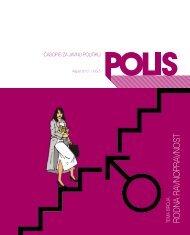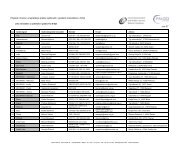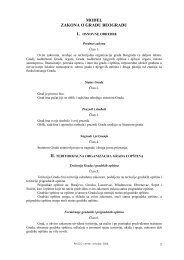Sustainable Brownfield Regeneration: CABERNET Network Report
Sustainable Brownfield Regeneration: CABERNET Network Report
Sustainable Brownfield Regeneration: CABERNET Network Report
Create successful ePaper yourself
Turn your PDF publications into a flip-book with our unique Google optimized e-Paper software.
<strong>Sustainable</strong> <strong>Brownfield</strong> <strong>Regeneration</strong>:<strong>CABERNET</strong> <strong>Network</strong> <strong>Report</strong>1Regenerating <strong>Brownfield</strong>s:A European Issue1.1Unsustainable Land Use: A European ProblemValuing Land as a Scarce ResourceLand is a scarce and valuable resource³. Over 80% of the EU’s 377 million citizens areliving in urban areas (cities and towns)⁴.Although many European cities have undergone a form of urban renaissance in recentyears, urban governors and city developers are increasingly criticised for their currentpractices and challenged to manage urban land more sustainably. For example,many cities are suffering from growing problems of urban sprawl, persistent areasof dereliction and deprivation, transport congestion, pollution and environmentaldegradation. This is putting pressure on the urban system and its citizens, in turnaffecting economic performance and quality of life. If the EC is to succeed in it’sobjective of becoming the most competitive global knowledge-based society⁵, urbanland management strategies will need to be a central part of the strategic policyinitiatives.Land Use Changes and <strong>Brownfield</strong>s in EuropeThe European landscape has changed significantly over the last fifty years. Theongoing restructuring of European business and the increasingly pervasive influenceof globalisation has led to considerable changes in European industrial activities. Inparticular, significant impacts are seen in the downsizing of enterprises and the loss of anumber of historical industries. Growth in other service industries and transformationsin the urban lifestyle have also lead to significant changes in land use.These drivers of land use change have influenced the creation of brownfields inurban areas. The current dynamics of the urban system have resulted in swift widescale dereliction in some areas and scattered temporal declines in other regions.Overall these changes have left Europe with a significant legacy of brownfield sites.The persistence and distribution of brownfield sites represents a significant trans-European urban management problem.³McGlade (2004) Speech to EU Conference ‘Changing Land Use in Europe – Getting in the Picture’. Kasteel Groeneveld,The Netherlands, 9-12 November 2004⁴Towards a Thematic Strategy on the Urban Environment”, Communication COM (2004) 60, European Commission,February 2004⁵The Lisbon Strategy - Making Change Happen, Communication from the Commission to the Spring European Council inBarcelona, COM (2002) 14 final, 15.1.200411


